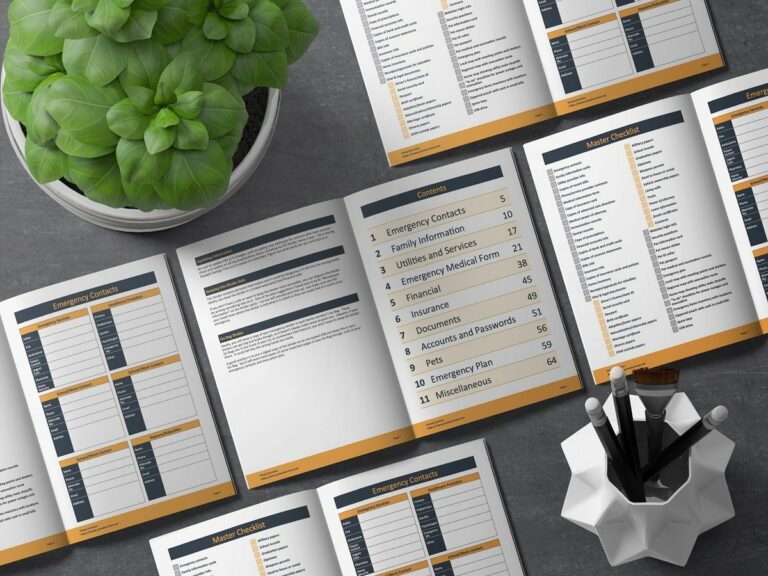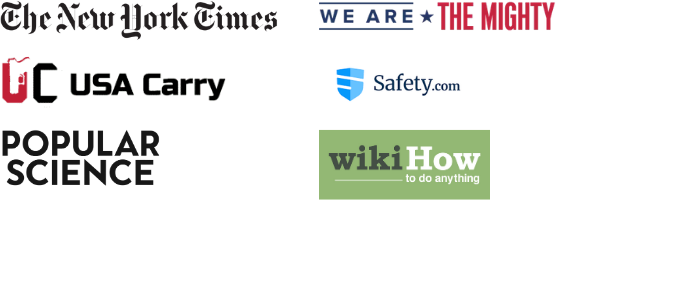I’ve talked before about the importance of having a fully-stocked first aid kit and made this complete home first aid supplies checklist and this wilderness first aid kit checklist.
However, having first aid supplies isn’t much good if you don’t know how to use them.
Here are the top 10 first aid skills that every prepper (and everyone else too!) should know.
1. How to Stop Heavy Bleeding
Three general types of bleeding can occur from injuries:
- Capillary Bleeding: These are more minor wounds that have just affected capillaries. The blood will ooze out. These injuries are not critical, but care should still be taken to prevent infection.
- Venous Bleeding: With a severed vein, more blood will come out of the wound. The blood will not spurt but instead comes out steadily. Venous bleeding can be dangerous in some situations, especially if multiple veins have been affected.
- Arterial Bleeding: This is the most critical type of bleeding. The blood will come out in spurts and be brighter red. Because arteries are typically under so much pressure, it is crucial to put lots of pressure on the wound to stop the bleeding. The heart is literally pumping blood right out of the body! A common mistake is not applying enough pressure to the wound.
When arterial bleeding has occurred, you need to apply direct pressure to the wound with a clean, sterile pad, then elevate the injured area above the heart.
You should also learn how and when to use a tourniquet
Here is what Harvard Health has to say about treating severe bleeding.
2. How to Clean and Dress a Wound
Whether it is a smaller capillary wound or an arterial wound, it is critical that you clean and dress it properly. Otherwise, an infection could occur, or bleeding could start again.
Make sure your survival first aid kit is stocked with enough sterile dressings.
You’ll also need supplies like irrigation syringes (Amazon link), cotton balls to clean the wound, and antibiotic ointments to prevent infection.
3. How to Treat Fever
I’m surprised how few people know how to treat fever properly. Of course, you should get professional medical help for severe fevers in everyday situations.
If it is a disaster situation, though, and you cannot get to an ER, you must reduce the fever yourself. Read here what Cleveland Clinic recommends.
4. Choking
Most of us know that you should use the Heimlich maneuver when someone is choking. But how many of us have practiced the Heimlich? Also, do you know the procedure for when a child or infant is choking?
A good first aid course will have dummies that can be used for practicing. Practice is essential because it will help ensure you perform the Heimlich thrusts at the right place on the abdomen.
Recommended Reading: How to Take Your First Aid Skills to the Next Level
5. CPR
Like with the Heimlich maneuver, knowing the steps of CPR isn’t enough. You’ve got to practice them!
What surprises many people trying out CPR for the first time is how hard you must push down during chest compressions.
Remember, the goal of the chest compressions is to pump the heart manually! You have to push down about 2 inches. You’ve also got to do it very quickly (30 times at a rate of 100 pumps/minute).
This is not easy to do if you haven’t practiced!
Another mistake people make with CPR is that they compress the wrong part of the chest, which can cause ribs to break.
If a rib breaks during CPR, you have to continue doing it.
Another mistake with CPR is that the person giving aid forgets to tilt the patient’s head back and pinch the nose. If you don’t do this, the air will go into the stomach instead of the lungs.
*Just because someone is unconscious doesn’t mean CPR is necessary!
One of my first aid instructors illustrated this point with a story. A man collapsed in a butcher shop. The butcher, wanting to help, started administering CPR and broke a few ribs in the process.
Well, it turns out the guy was unconscious but still breathing, so CPR was completely unnecessary.
Hence, the first step of CPR is checking whether the patient is responsive and breathing.
6. How to Treat Shock
Shock occurs when there isn’t enough blood circulating to the brain, so the brain doesn’t get enough oxygen. When this happens, the patient may feel faint, dizzy, disoriented, anxious, or look pale, have slow breathing, and have a weak pulse.
Shock can occur for many reasons, such as when there has been a lot of blood loss, an infection, or injuries that cause loss of fluids.
If someone is in shock, they should lie on their back with their feet elevated. This is so the blood will circulate to the brain better. Cover the person with a blanket to keep them warm. You should never give a shock patient water because it could lead to choking!
7. How to Make a Splint
This first aid skill is vital for people who go into the wilderness. If a bone breaks, you must use a splint to prevent movement. You can fasten a splint out of branches secured in place with bandages.
You could also use a triangular bandage in a pinch.
A splint is also necessary for treating venomous snake bites.
8. How to Treat Hypothermia
When I was 8 and backpacking with my dad, I went swimming for too long and got hypothermia. When my dad found me, I was completely disoriented and curled up in a ball next to the lake.
In mild hypothermia cases, like I had, you want to move the person to a warmer location, wrap them in warm blankets, and keep them dry. You’ll also want to give the person warm drinks and lots of high-calorie foods like chocolate. (the thing I remember most about my bout of hypothermia is that my dad gave me all of the chocolate from the trail mix)
In severe cases of hypothermia, you should avoid moving the patient. If possible, warm the patient on location. Or make sure to move the patient very gently to the warmer area.
In no case of hypothermia should you put the patient in a hot bath or use hot pads! This can cause blood capillaries to burst! Here is what the NHS has to say about hypothermia.
9. How to Treat Diarrhea or Vomiting
No one likes to talk about it, but many hygiene risks, such as sewage flooding and disease outbreaks, come with disasters.
Even if the disease you catch isn’t deadly, it could cause diarrhea or vomiting. In survival situations, both of these can be very deadly!
Keep some antidiarrheal (Amazon link) and anti-vomiting (Amazon link) agents in your first aid kit. You’ll also need electrolyte solutions (Amazon link) for dehydration.
If caught without the necessary meds, it is possible to use these natural diarrhea remedies.
Drinking water isn’t enough to treat severe dehydration!
10. The Right Mindset
It isn’t enough to learn first aid skills. You also must know the psychological skills necessary to use all your first aid knowledge. We commonly refer to this as mental preparedness, which sets you apart from those who panic and those who respond to emergencies.
Think, for example, what you’d do if a family member were just severely injured. Would you be able to put aside your emotions and take the correct emergency response steps?
The best way to develop mental toughness for emergencies is to PRACTICE. Reading tips and watching videos on the internet is not enough. You need to sit in on a live course, preferably in the field and have lots of opportunities to practice on dummies and partners.
Here are some places to take first aid courses and get the practice you need for emergency preparedness!
- Contact local ranger stations to see if they have any search and rescue, wilderness, or EMT training
- Community colleges often have first aid courses
- Check with your local fire station to see if they offer any courses
- Check with your local health department, as they might organize courses
- The Red Cross has lots of courses, including online courses
Thanks to all of the Primal Survivor group members who gave me tips on where to find first aid courses and training for preppers!
Have you taken a good first aid course? Let us know where! Add your reply in the comments.


RE: dehydration and hypothermia – don’t forget that simple test of taking a pinch of skin [like on the back of the hand] and letting go. And checking on how fast it is returning to its regular shape.
This would have been a great article if I could have printed it out for our prepper group, but it cut the edges or skipped some altogether.
I assume you meant that CPR needs to be done 30 times at a rate of 100 pumps/*minute* not /second.
Yes that should be per minute – thanks for catching that typo, have fixed it.